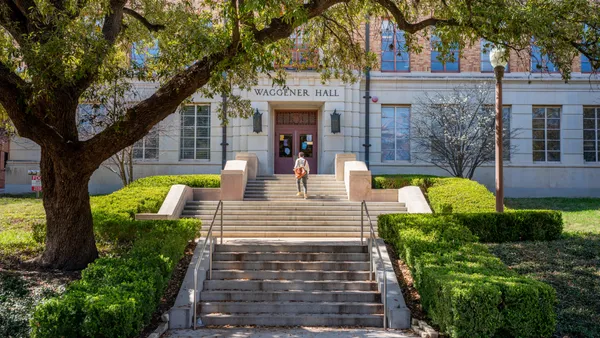Calbright College had a slow and rocky start since it opened its doors in 2019. But over the last couple of years, California’s free online community college has notched wins and reached state-mandated milestones.
The college is designed to give working adults the flexibility to complete a certificate program, allowing them to boost their earning potential while overcoming barriers they would face at a typical college.
However, its first CEO resigned unexpectedly after less than a year on the job. Enrollment and certificate completions also staggered in the early years, leading to a handful of unsuccessful attempts from the California Legislature to defund the college. And in 2021, a scathing state audit blamed Calbright’s former leadership and its strategy for the slow start and recommended the institution shut its doors if it didn’t improve.
Now, under the leadership of CEO and President Ajita Talwalker Menon, Calbright’s enrollment has surged from just 481 in July 2021 to 3,240 last month, according to figures provided by the college.
So far, Calbright has designed and validated 17 new programs, meeting a key legislative milestone. The number of certificates Calbright has awarded since its launch has also steadily increased — from 116 in June 2022 to 286 in June 2023, according to its recent milestone report. In July, the college received accreditation through the Distance Education Accrediting Commission, another legislatively mandated accomplishment.
Calbright is about halfway through its seven-year startup period, officials say. And they’ve got big developments ahead, such as launching a data analysis program in September and creating policies so students can transfer credits.
The college is now seeing the effects of initiatives that were implemented 18 months ago, said Brendan O'Callaghan, Calbright’s vice president of marketing, communications and external affairs.
“We really built a model that reflects the realities of adult learners in California,” said O’Callaghan. The college has so far met every legislative milestone outlined in its founding legislation and is making “good progress” on the recommendations outlined in the state’s 2021 audit report, said O’Callaghan.
Calbright has “clearly been making improvements,” said Phil Hill, a consultant and market analyst who’s been tracking changes at the college.
Hill believes Calbright’s early struggles were due to having an “awful product and unrealistic plans” — critiquing the design of the programs and arguing its model does not entice program completion. But he is more optimistic about the college’s prospects than he has been in the past.
Still, the number of credentials awarded to students is “not even in the order of magnitude that they need to be producing at this stage,” said Hill.
“It’s better than it was before, I see some valuable learning that they’re doing as an organization,” said Hill. “But what I don’t see is them getting anywhere close to the level of productivity that makes sense for what they should be doing.”
Needed changes and growth
Hill said Calbright’s challenge is that the college is allowing students to take a free program whenever or however they choose — and, as a result, students are not making significant progress.
“The best thing they’re doing is saying, ‘Okay, we acknowledge we’ve got to try something different,'” he said.
Calbright launched a pilot program for students enrolled in its customer relationship management platform administration program that set nonbinding deadlines to complete the program, said O’Callaghan. Administrators found that students put under a timeline completed 41% of their program’s coursework within 10 weeks, compared to just 26% for students without deadlines during the study period, the milestone report stated.
Even with the flexible model, the college can “create parameters that our students are asking for to help them stay accountable and keep the momentum up,” said O’Callaghan.
Serving adult learners comes with its own challenges, as that population has historically struggled with student success, said O’Callaghan. The college recently partnered with the University of California, Irvine and nonprofit consulting firm Ideas42 to implement behavioral and data science-backed strategies aimed at improving educational and career outcomes for the college’s working adult learners.
But serving adult students is “a tough nut to crack,” O’Callaghan said.
As it works toward solutions, Calbright continues to try to grow and provide new opportunities for its students.
The college launched an outreach strategy aimed at engaging potential students online through its website and in-person through workforce intermediaries and employers, said Michael Younger, the college’s vice president for workforce, innovation, and strategy. And, Calbright has focused on collaborating with county governments to partner with public and private employers.
That includes collaborations on programs with the company Opportunity@Work, apprenticeship provider Bitwise Industries and Bakersfield College. Calbright plans to announce additional partnerships in the next couple of months, Younger said.
“What we’ve seen is the great deal of support across the board from private to public to philanthropic really wanting to be engaged in terms of the model that Calbright has put forward,” Younger said.





















